Do you want to adopt a dingo? Or maybe you’re thinking of buying a dingo? If you’re thinking of bringing a Australian dingo into your life, I hope this article helps in some way. I also hope this article helps more Australian dingoes in need of adoption, an animal I’ve really grown to love.
There are many reasons why you might want to adopt a dingo: maybe you’ve seen some videos of dingo pups online and you think they’re adorable, or maybe you just think they’re super cool animals (which they are!), or maybe you want to do something good in the world. If you have an Australian dingo, I’d love to hear why you’ve adopted a dingo — comment below to share your experience.
One reason to adopt a dingo
There are a few amazing things about dingoes so you’re probably wondering why I’m only talking about one reason why you might want to adopt a dingo. I’m mostly covering one reason, because I see it as one of the most important, and I’ll quickly cover a few extra reasons at the end.
So the one reason, and I believe the most important reason, you might want to adopt a dingo is this: you want to save a dingo and give it a caring home.
Dingoes have it pretty rough out there. They have limited legal protection in Australia and for many reasons, many dingoes end up needing to be adopted.
One reason you might want a dingo is so that you can adopt it, save it from euthanasia and give your dingo a caring home.
A few people have said “dingoes deserve to live wild and free” and yes, dingoes belong in the wild, absolutely, 100%. But unfortunately, dingoes aren’t always being left in the wild and many dingo cubs are left with no parents to care for them.
Here’s my video about one reason why you might want to adopt a dingo:
Dingo and pet adoption shelters often have dingo cubs as well as adult dingoes who are in need of foster care and adoption. There are many reasons for this, and below I’ll talk about the reasons why our wild-born dingoes were up for adoption.
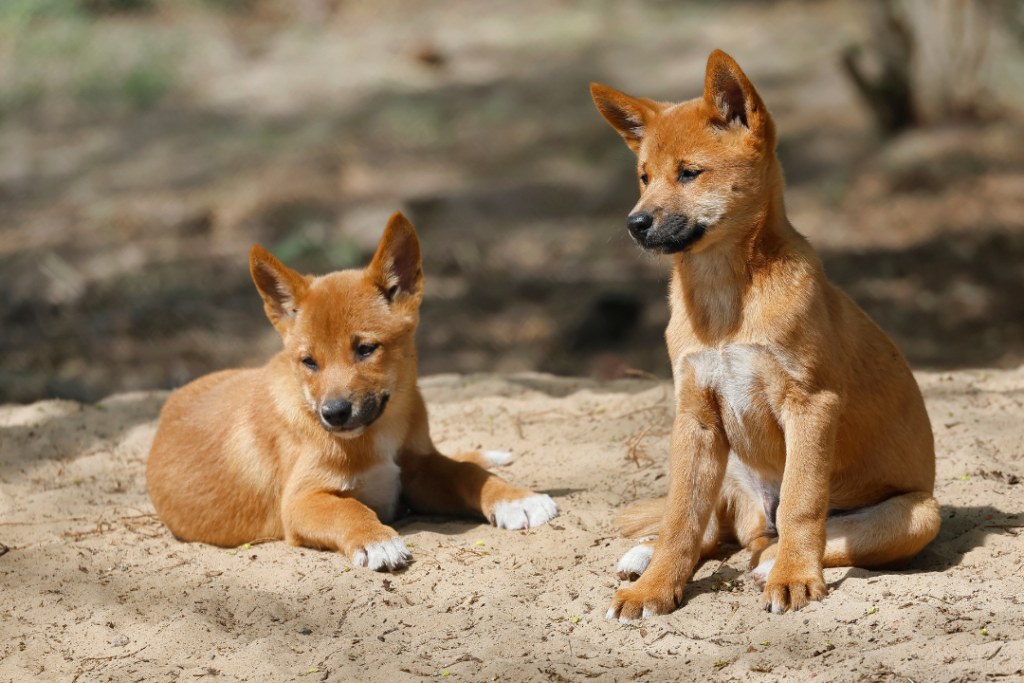
Why our dingoes were up for adoption
1. The Australian government and landowners can legally kill dingoes
So get this. In Australia, dingoes are classified as a native species, just like the kangaroo and koala.
Despite being classified as an Australian native species, Australian dingoes can be killed intentionally. The laws and guidelines vary in each state, for example in Victoria, a permit is necessary before killing a dingo.
In Western Australia, the government refers to dingoes as pests, that is, “high priority invasive species”. The West Australian government and landowners legally kill Australian dingoes by shooting them, using 1080 poison and steel-jawed traps. Find more information about dingo killing at Defend the Wild (WARNING: Contains graphic images).
Our oldest dingo, Rusty, became orphaned as a cub when his parents were shot in the Gascoyne region of Western Australia. He was only 3-4 weeks old.
2. There are no laws or regulations when it comes to dingo adoption or ownership in Western Australia
So what happens to the dingo cubs when their parents are shot? The laws vary in each state or territory. In Western Australia, currently there are zero laws, guidelines or regulations. Doggers can do as they wish. In Australia, a dogger is a common term used to describe a person employed to trap and shoot dingoes and wild dogs.
Rusty was very young when his parents were shot, and the dogger took the dingo cubs from their den and sold them wherever he wanted. In Rusty’s case, he was sold in a country pub up in Carnarvon for a couple of hundred bucks.
It might seem funny on the surface that he was casually sold in a pub but we all know it’s not. The biggest problem with this is that Rusty spent the next two years bouncing around from home to home. The dogger wasn’t interested in making sure Rusty went to the right home, it could be fair to say that the dogger was only after a quick buck. Even if he’d made a judgement call after meeting the buyer, dingoes are complex animals that can’t simply be handed over in a pub.
If people don’t know what they’re getting into and if dingo owners aren’t prepared to do what’s needed to adopt a dingo, eventually that dingo is going to have to be rehomed. Ask any dingo rescue in Australia and it’s guaranteed that many dingoes that come through their services were surrendered because the owners weren’t informed and weren’t prepared to look after a dingo.

Some states have laws or guidelines, for example, in Victoria, before adopting dingoes, you need to show that you have adequate fencing and obtain a licence, but in Western Australia there are no dingo-specific guidelines.
Rusty’s first home was one of immense freedom, which sounds idyllic, but the problem was that he was let out each morning to roam free around town. As you can imagine, the people in the town weren’t too happy about a dingo roaming around town everyday, and eventually the shire declared that the dingo had to be dealt with: either the owner had to keep Rusty contained or he had to go.
So off he went.
3. Dingoes are not dogs
So Rusty’s next home was with a dog trainer. But here’s the thing. Dingoes aren’t dogs. They have some similarities but at the end of the day, dingoes can’t be trained to be obedient to the extent that a dog can. Dingoes can learn commands and are noted for their intelligence, but their willingness to comply will never equal that of a domestic dog.
We don’t know why the dog trainer adopted Rusty. If he had done his research, he would have known that training a dingo would have been a massive challenge.
We’re guessing they didn’t have a great relationship and that this is the home where Rusty developed a distrust of men. When we met Rusty, he was wary of men and wouldn’t sleep indoors if a man was home. I’m glad that he found the confidence to trust me.
The trainer and Rusty did not get along, so the trainer gave Rusty back to SAFE. SAFE stands for Saving Animals From Euthanasia.
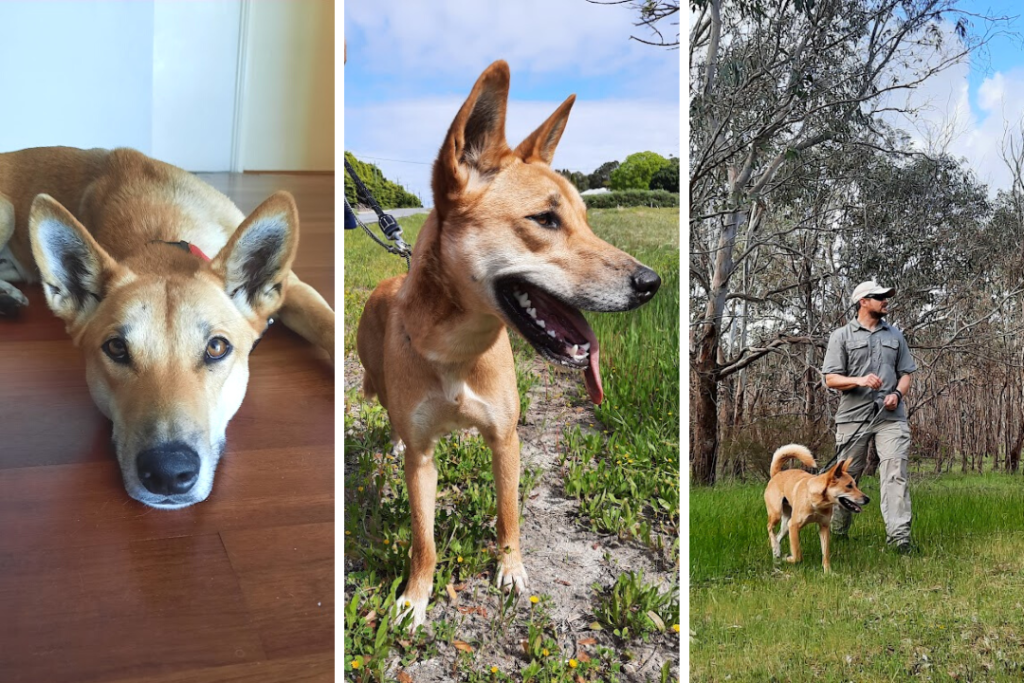
4. Dingoes don’t always get along
If you’re thinking of adopting a dingo it’s important to remember that dingoes, like dogs, can experience anxiety and loneliness — often they like having a companion. For this reason, many families adopt two dingoes or make sure their dingo has an appropriate companion dog to play with.
Rusty went to a new home where there was already a dingo. It’s often recommended to pair a male and female, rather than two females or two males. In this case, unfortunately Rusty wasn’t accepted by the female dingo. She kept attacking Rusty or showing dislike in various ways so unfortunately this family had to let him go.
And this is when Rusty came to us!
5. Wild dingoes can be separated from their pack
Jalba, our younger dingo, was found by the roadside in Western Australia’s Pilbara region. This is a hot, dry, arid region, pretty much desert. Someone found him starving, dehydrated, and severely injured.
We don’t know how Jalba got separated from his pack but he was only 5 weeks old and his tail had been severely damaged and he was in need of food, water and medical attention.
What happened to his tail? An animal stripped a lot of the meat off his tail, which then became infected. They believe a large goanna, kind of like a perentie or something like that, managed to get hold of him. A perentie is no small lizard, these can reach over 2.5 metres in length which is over 8 feet.
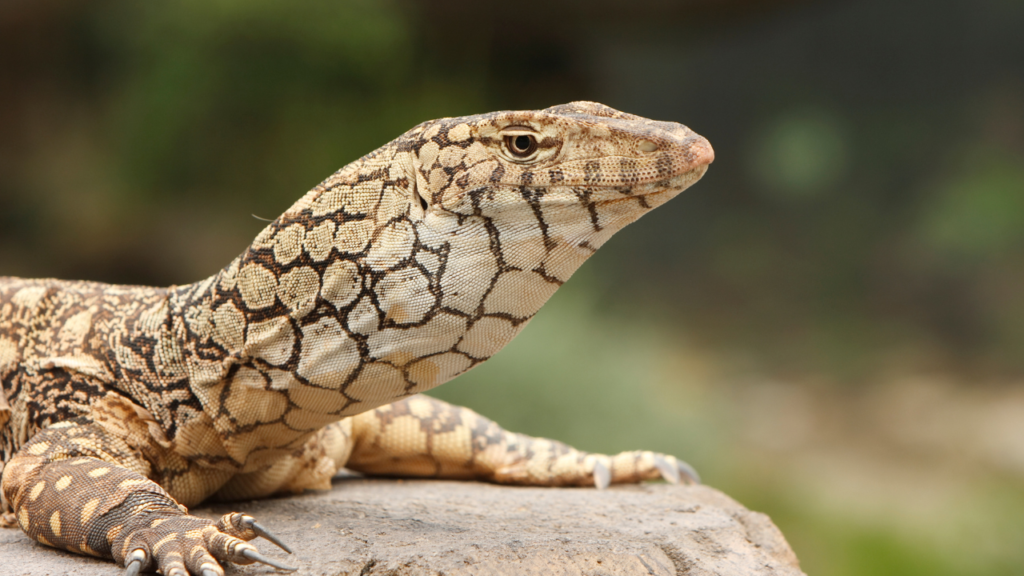
When he was found, his pack was nowhere to be seen. They could have been around, just not visible. Now, I don’t believe that the family who found him actually knew he was a dingo. They could have thought he was a dog that had fallen off the back of a car or something and was wounded and left for dead on the side of a road.
So they picked him up, took him to the nearest vet, and then that vet decided that the best course of action was to amputate his tail. And that is why his tail is missing; you’ll see in my other videos that Jalba has a very small tail. He was then cared for by a local person experienced with dingoes before travelling to SAFE Carnarvon.
While some dingoes are legitimately separated from their pack, there are also humans who inadvertently remove dingoes from their pack. They might see them in the wild and think they need help, when really, their families are nearby. If you think you’ve seen a dingo that needs help, don’t take it, call a wildlife agency so they can monitor the situation first.
In other cases, people take dingo pups intentionally, to keep them or sell them. We hear of it over and over again — this is one reason why dingoes end up being abandoned by humans in the wild and given up to adoption agencies. Once a dingo has been taken from the wild, if you release it back into the wild without guidance, its chances of survival are small and it’s illegal in some parts of Australia.
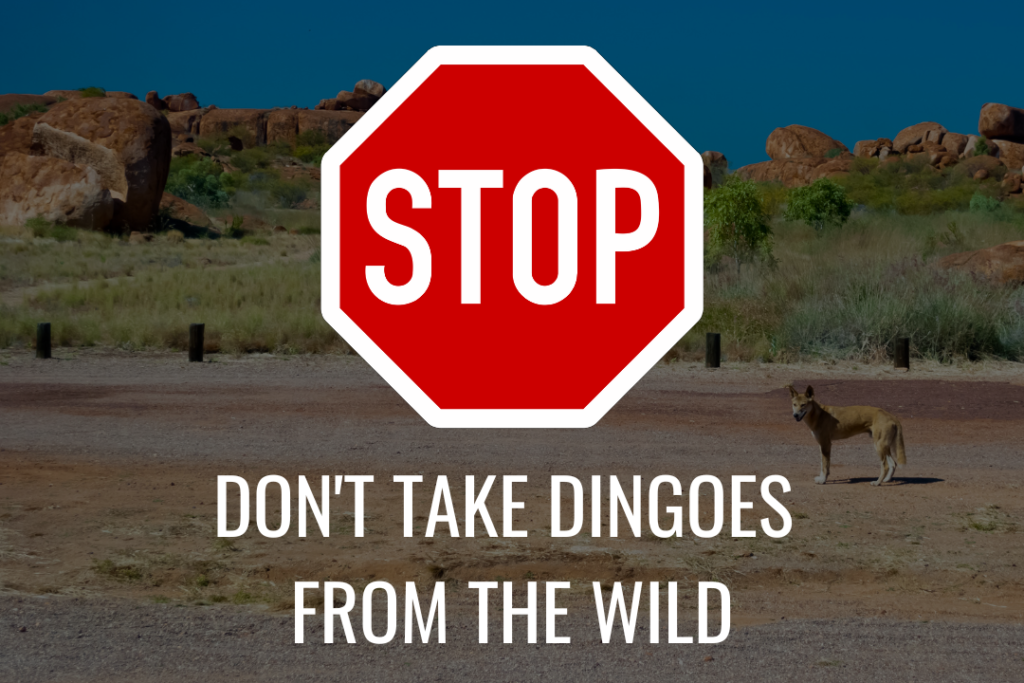
More reasons to adopt a dingo
Dingoes can be great pets
Okay, so referring to dingoes as “pets” can be controversial, because they are wild animals and we are more “dingo guardians” than “dingo owners”. But that’s a discussion for another time.
We were never specifically looking for a dingo, let alone two. The thought hadn’t even crossed our minds that having a dingo in the home was even a possibility until we stumbled upon Rusty on the SAFE Carnarvon website. Then we started asking questions like, “what on earth is a dingo doing on a dog adoption website?” and “can anybody own one or are SAFE looking for a wildlife park?” We started doing our research and found out some of the benefits of having a dingo around the home.
Dingoes are not suitable for everyone, so always, always do your research before adopting a dingo.
Dingoes live a long time
While dogs typically live 8-15 years, dingoes who live in domestic environments can live 15-20 years, so if you’re looking for a long term companion, a dingo might be for you. If you’re not up for a long term commitment, maybe consider fostering, rather than adopting. When you foster a dingo, you’ll only have them for a few weeks or months while they’re waiting for their new home. Some people might want to get close to dingoes but aren’t able to commit — one option is to donate to a dingo sanctuary like The Dingo Discovery Sanctuary and Research Centre, where you can also volunteer your time.
Dingoes don’t cause allergies
So I’ve always loved the Japanese Akita and we’ve considered a few different dog breeds over the years. The biggest problem with getting a dog has been my wife’s allergies — she’s allergic to most dogs.
Fortunately for us, dingoes don’t usually trigger the same reaction in people. It’s generally believed that fur causes the allergic reaction, but it’s actually dry skin follicles, otherwise known as dander. So we assume that dingoes don’t create as much dander, and we do our best to keep the area clean and wash their blankets regularly. They also aren’t allowed in bedrooms and other carpeted areas in our home.
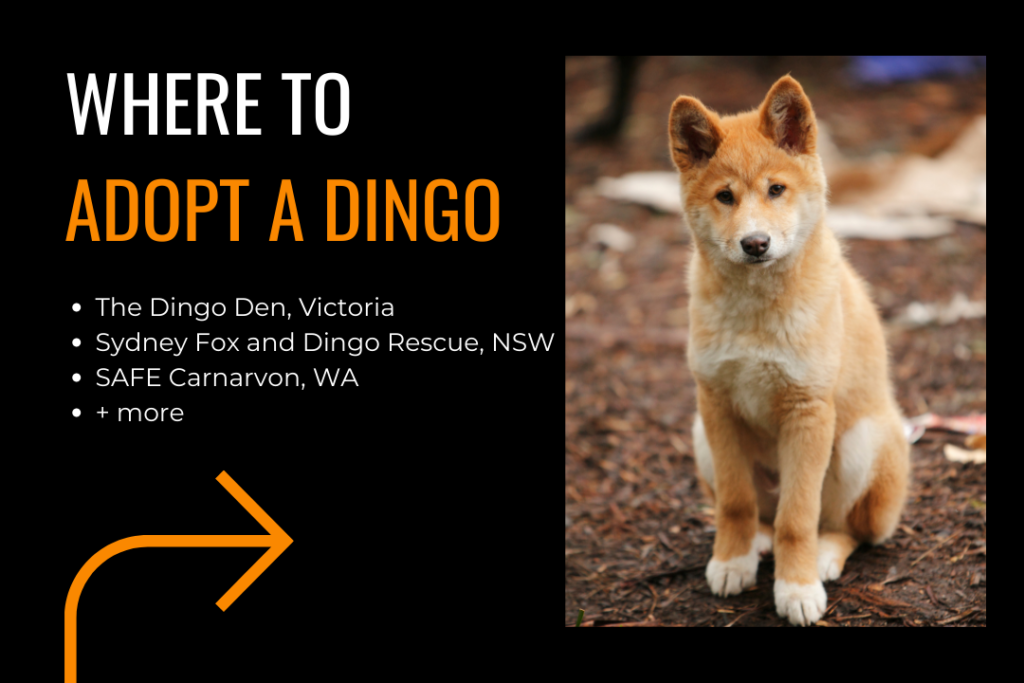
Where you can adopt a dingo
So I think it’s important to help out animal rescues — you can contact these places if you’re looking at adopting a dingo:
- Dingo Den in Western Sydney
- Sydney Fox and Dingo Rescue in New South Wales
- Highlands Dingo Rescue in Tenterfield, New South Wales
- SAFE Carnarvon in Western Australia.
> If your organisation isn’t listed, feel free to comment below or drop me an email.
Remember, if you’re adopting a dingo and you’re not given dingo-specific information, you might not be dealing with a reputable organisation or individual. Ask how they ended up with your future dingo, it’s health and all those important questions. A reputable organisation will also ask you a fair amount of questions, such as what kind of fencing you have, if you’re aware of a dingo’s unique needs and what others pets you have at home.
Do I recommend adopting a dingo?
I would recommend it if you are the kind of person who has the capacity to help an animal in need. Please don’t accept one taken from the wild, adopt a dingo instead.
From my own personal experience, I know dingoes can be great family members, for the right families. We’ve had Rusty and Jalba for over eighteen months now and they are very much at home and very much loved by all our family members. They sleep indoors, they enjoy pats and Rusty enjoys a good old wrestle. Jalba on the other hand is a big softy and doesn’t like to play rough with us at all, just his brother, which is interesting because it shows they can have different personalities.
At the time of adoption, our youngest child was ten, and we definitely wouldn’t recommend a dingo to a family with younger children. We realise some people have younger children at home with their dingoes and that is fine, no judgement here. They would obviously just need to monitor the situation more closely. We find our boys get over excited when our young nephew visits and can easily knock him over accidentally as they (the dingoes) play and chase each other.
Younger children are more unpredictable in their movements, which can startle a dingo more easily than a domestic dog, as dingoes have a very strong flight or fight response. For these reasons I wouldn’t recommend them around a younger child.
Dingoes aren’t for everyone. Just like when anyone’s thinking of adopting a dog, you need to do the research, consider a dingoes’ characteristics, their needs and your needs.
Your needs are probably the most important part in this decision making process. So if you need an animal who will do everything you ask on command or you have your heart set on travel, amongst other things, then a dingo isn’t for you. But if you are looking for an animal who needs a home, is loyal, has a bit of cheek, keeps you on your toes and develops a bond with you, then I say go for it because I find the experience to be quite rewarding.
If you have an Australian dingo, I’d love to hear why you’ve adopted a dingo — comment below to share your experience.
Further information:
5 reasons not to get a dingo
In my YouTube video, “Five reasons not to get a dingo”, I covered a few of the interesting quirks and characteristics of dingoes and why you might not want to adopt a dingo. Here’s a link to the article.
Secret videos show animals being trapped and killed. Are they wild dogs or dingoes?
The ABC recently produced a video about native Australian animals being trapped and killed, including dingoes. WARNING: Distressing content.
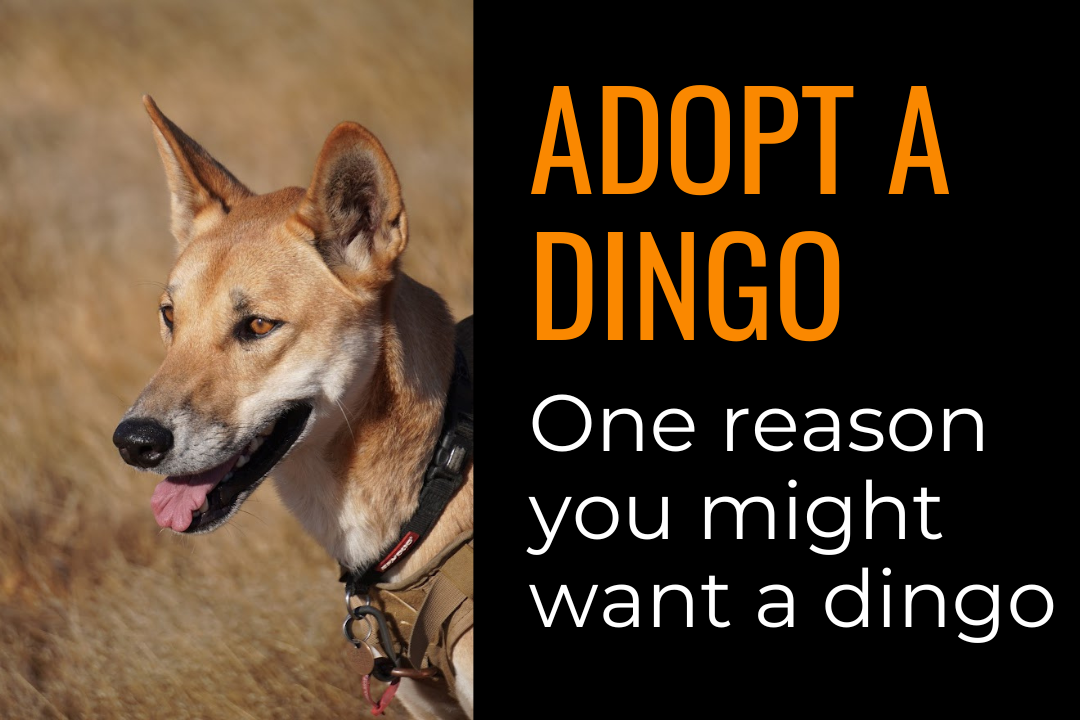
0 Comments